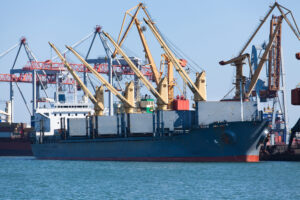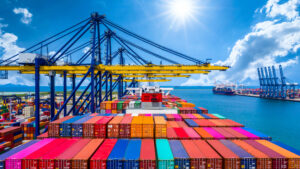The EU’s agency has warned the Member States that still need to import Russian liquefied natural gas to avoid an energy shock.
Acer, the European Union Agency for the Cooperation of Energy Regulators, said efforts to curb Europe’s record imports of Russian LNG “should be approached with caution particularly in light of the imminent expiration of the ship-or-pay transit contract for gas pipeline supply from Russia to Europe via Ukraine by the end of 2024.”
As described in the REPowerEU plan, Europe is aiming to completely end its reliance on Russian fossil fuels by 2027. “To this aim, the reduction of Russian LNG imports should be considered in gradual steps starting with spot Russian LNG imports,” Acer said in a report published in April.
“This could potentially lead to a loss of 13.6 bcm of natural gas supply compared to the flows in 2023,” warns Acer.
Although the EU has succeeded in replacing Russian pipeline gas with LNG since the Kremlin’s 2022 full-scale invasion of Ukraine, the global gas market is still tight.
The European Union discusses proposals to implement its first direct measures on Russian LNG.
In accordance with various media outlets, the discussions are still at an early stage and some member states are sceptical of the proposals. EU sanctions need the backing of all member states to be adopted.
Although the EU is trying to reduce its dependence on Russian LNG since the Kremlin’s full-scale invasion of Ukraine, the global gas market is still tight.
The EU agency also signalled its concern about the fact that substantial volumes have already been contracted under long-term LNG agreements before the 2022 Ukraine invasion.
“Certain regulatory provisions outlined in the agreed text of Directive on internal markets for renewable and natural gases and for hydrogen allow Member states to temporarily restrict gas supplies, including LNG, from Russia and Belarus. This includes the ability to limit upfront bidding for capacity at entry points and LNG terminals if needed to safeguard security of supply,” Acer noted.
The EU agency for the cooperation of energy regulators added that “while such measures may target to reduce dependence on Russian gas, it’s important to note that substantial volumes have already been contracted under long-term LNG agreements before the Russian invasion of Ukraine.”
Russian LNG production in 2023 accounted for 42 bcm. The main initial destinations of Russian LNG were EU27 (18 bcm), China (11 bcm), Japan (8 bcm) and South Korea (2 bcm), altogether representing more than 90% of the Russian LNG, reported Acer in its analysis of the European LNG market developments.
A part of the 18 bcm of Russian LNG imported by the European terminals was finally re-exported to China, Taiwan, India, and Turkey among other destinations in the form of LNG reloads.
The rise in LNG imports has positioned Europe as the largest LNG importer, placing the European Union ahead of other importing countries such as China and Japan.
EU Member States imported 134 bcm of LNG in 2023. The figure represents 42% of the European Union’s total gas imports. France has become the largest EU LNG importer with 30 bcm in 2023, surpassing Spain (25 bcm in 2023). The Netherlands, Italy and Belgium follow, as the third, fourth and fifth largest LNG importing countries in the EU.



